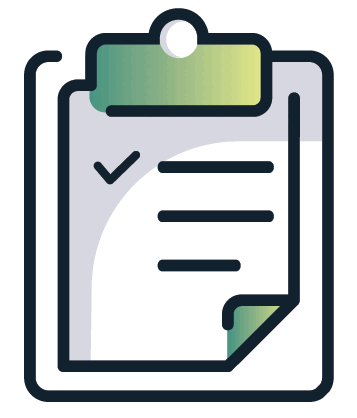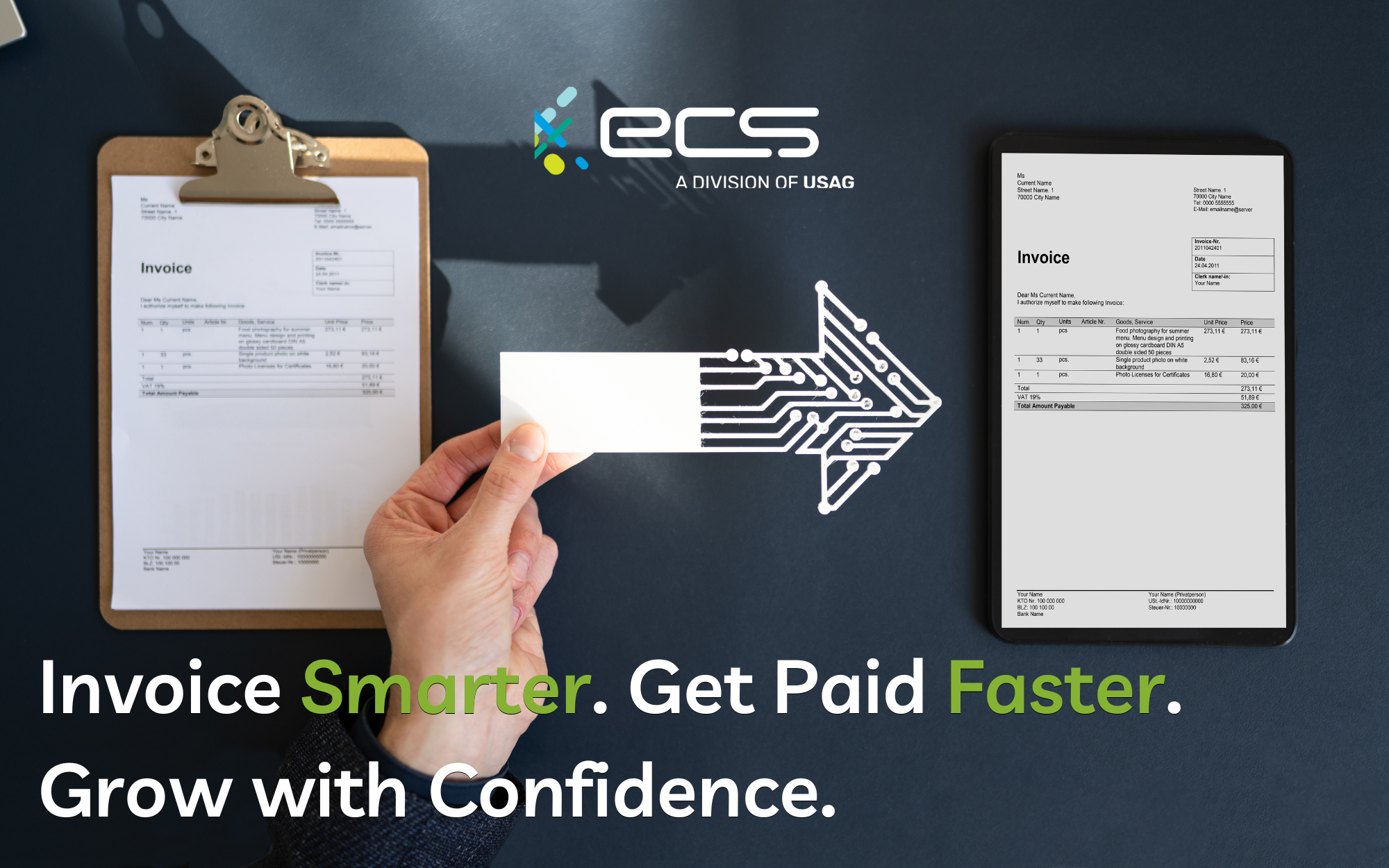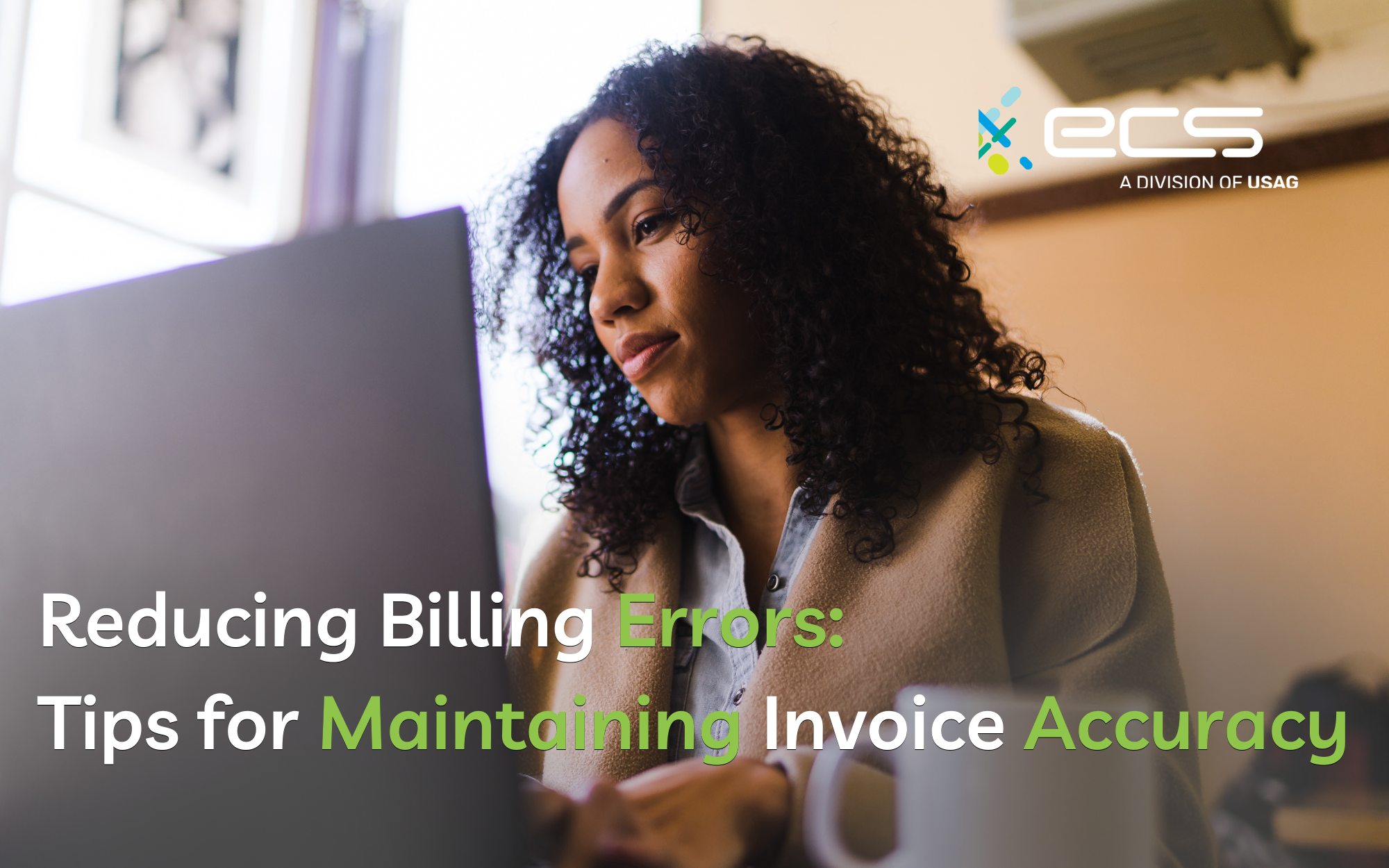Billing mistakes can start with a small error—a misplaced decimal point here, a misspelled name there, or a missing item description—but the consequences can ripple throughout a business, which highlights the importance for invoice accuracy. For small businesses especially, billing errors don’t just hurt cash flow; they damage customer trust, slow down the payment process, and create time-consuming and costly internal confusion.
In industries like medical billing, where the wrong invoice can cause insurance company denials or compliance issues, accuracy is not optional. Whether delivering physical goods or providing hands-on services, ensuring accurate invoices is one of the most impactful ways to streamline operations and strengthen your bottom line. Adopting accounts receivable best practices can help your business secure timely payments, reduce errors, avoid disputes, and maintain healthier financials.
Let’s explore what causes billing errors and, more importantly, what your business can do to avoid them.
Common Causes of Billing Errors
Understanding the root causes of invoicing errors is the first step toward prevention. Most mistakes stem from one of the following:

1. Manual Data Entry
Manually processed invoices are prone to human error. Simple mistakes like typing the wrong product code, miscalculating totals, or entering the wrong payment terms can derail the entire invoicing process. When every invoice must be keyed in line-by-line, the risk grows with every new transaction.
Manual work, however, isn’t completely obsolete. An accounting team, of course, has its place and remains essential, but Even the most diligent employee can make mistakes due to fatigue, stress, or distractions. Imagine Linda, employee of the month, had a rough night, her grandkids kept her up, and her coffee hasn’t quite yet kicked in. Her lack of focus on a one-off day could lead to a simple but significant error. She could easily accidentally miss a simple number, and as a result, your books are completely off.

2. Outdated Customer Information
Using outdated or incorrect client details—like old billing addresses or deactivated emails—can result in invoices never being received. In B2B scenarios, sending an invoice to the wrong department or contact can delay timely payments by weeks. You should know how to collect more accurate customer data.

3. Mismatched Records
When what’s billed doesn’t match what was delivered, a dispute is inevitable. This often happens when records between departments don’t align—sales records, shipping manifests, and billing systems may all contain slightly different information. To reduce the risk of discrepancies and increase invoice accuracy, you need to implement strong interdepartmental coordination practices.
Best Practices for Invoice Accuracy
Now that we know the leading causes of inaccurate invoices, it’s time to discover how to best avoid these practices. Avoiding billing errors starts with a more thoughtful approach to invoicing. Below are the top three strategies to help businesses of all sizes improve their invoicing hygiene.

1. Use Standardized Templates
Having a consistent invoice format helps reduce misunderstandings and standardizes what information appears. Every invoice should clearly show the customer name, contact details, an itemized list of goods or services, pricing, payment terms, due date, and how to remit payment.

2. Itemize Everything
Vague or incomplete descriptions can lead to questions and disputes. Itemization allows customers to see exactly what they’re being charged for, which is particularly helpful for medical billing or project-based service providers like contractors, electricians, plumbers, etc.

3. Automate Where Possible
Last, but certainly the most important for invoice accuracy, is automation. Switching to automated invoicing software is one of the easiest ways to save time and reduce the potential for human error. Automation tools can pull customer data, pricing, and service details directly from your business’s integrated systems.
Whether a one-time job or a recurring monthly invoice, automation helps to create accurate invoices at scale, making your overall invoicing process faster, cleaner, and easier to audit.
Tools & Technology to Minimize Errors
Automation is the foundational method for reducing billing errors. Let’s dive deeper into what this means and what tools can help your business accomplish more accurate billing through automation.
Modern invoicing software can do more than simply generate bills for your customers—it connects with your broader tech stack to offer powerful error-reduction features. Here’s how the right tools can support accurate invoicing:
1. CRM and Accounting Software Integration
To minimize the risk of incorrect or mismatched customer details, you should always sync your accounting software with your CRM and sales platforms. Customer updates, pricing agreements, and delivery confirmations automatically feed into your invoices, ensuring you’re charging for what was agreed upon.
2. Automated Invoicing Software
If you’re looking to streamline the entire invoicing process, these invoicing platforms can help:
- QuickBooks Online – Ideal for small to mid-sized businesses. Quickbooks offers recurring invoicing, payment reminders, and strong reporting tools for better cash flow management.
- FreshBooks – Great for freelancers and service-based businesses. Includes time tracking, client portals, and automated reminders.
- Xero – A powerful choice for businesses needing both accounting and automated invoicing software. Offers smart invoice reconciliation and real-time financial tracking.
- Wave – A free invoicing option for solopreneurs and small businesses. Offers automated reminders and integrated payments.
- Bill.com – Designed for high-volume invoicing with approval workflows and deep ERP integrations.
These platforms automate everything from invoice generation to follow-ups on outstanding invoices.
3. Smart Payment Processing
Making it easy for customers to pay you is one of the most effective ways to get paid faster—and integrating your invoicing software with a reliable payment processor like ECS Payments makes a big difference.
With this kind of setup, your invoices can include secure payment links directly in the email or PDF. Your customer gets the invoice, clicks the link, and pays right then and there through a secure payment gateway. No more copying payment info, jumping to another site, or hunting down an address. It’s quick, simple, and user-friendly.
From your side, you also save a ton of time. Payments are automatically matched to the right invoice, cutting down on manual entry and making invoice reconciliation way easier. It also reduces the chance of human error that can creep in when you’re trying to match payments manually.
On top of that, these integrations can give you real-time data and insights into who has paid, who hasn’t, and where there might be delays. That kind of visibility is gold when it comes to managing cash flow and planning ahead.
Internal Controls and Reconciliation Processes
Even with the best tools in place, strong internal checks are essential. Internal controls create accountability and catch errors before they reach the customer.
1. Review Cycles
Establish a transparent review process where at least one other team member verifies the invoice before it’s sent out. Regularly reviewing invoices catches inconsistencies like incorrect line items or math errors.
2. Approval Workflows
Larger businesses can benefit from a multi-tiered approval workflow. What does this look like? Let’s take this workflow: For example, the project manager signs off on time tracked, the finance team confirms charges, and the accounting team finalizes the invoice. This multi-step approval workflow may seem unnecessary and tedious, but it ensures accuracy checks at every step.
3. Invoice Reconciliation
Reconciling your invoices with bank statements, delivery logs, or payroll systems is key in invoice reconciliation. By matching payments received with invoices issued, you identify unpaid bills, underpayments, or duplicated charges. Making this part of a monthly close process is one of small businesses’ most critical accounts receivable best practices.
Training and Communication Across Teams
Technology is only as good as the people using it. Training your staff to understand how your invoicing process works—and how to identify common billing errors—can prevent mistakes before they happen.
Make sure your team is trained on the following:
- How to input data consistently
- When and how to update customer information
- What to do when a customer disputes a charge
- How to escalate complex billing issues internally
Cross-team communication also matters. Your sales, customer service, fulfillment, and finance teams must be aligned on what was promised, delivered, and billed. Without that coordination, human error can sneak in.

Conclusion: The ROI of Getting Invoicing Right with ECS
Investing in accurate invoicing doesn’t just reduce mistakes—it enhances your entire financial ecosystem. From cash flow management to customer satisfaction, clean invoices are a sign of a business that runs efficiently and professionally.
Companies that prioritize invoice accuracy through standardized processes, internal controls, automated invoicing software, and integrated systems not only save time but also avoid disputes, get paid faster, and earn more trust from customers and partners.
With ECS Payments, you can combine smart payment solutions with reliable invoicing software that scales with your business. Whether you manage a service-based team, a multi-location business, or work with an insurance company as part of a medical billing practice, ECS helps ensure every invoice is timely, accurate, and easier to manage.
Reducing billing errors isn’t just good housekeeping—it’s a growth strategy. Let ECS show you how to do it better.
